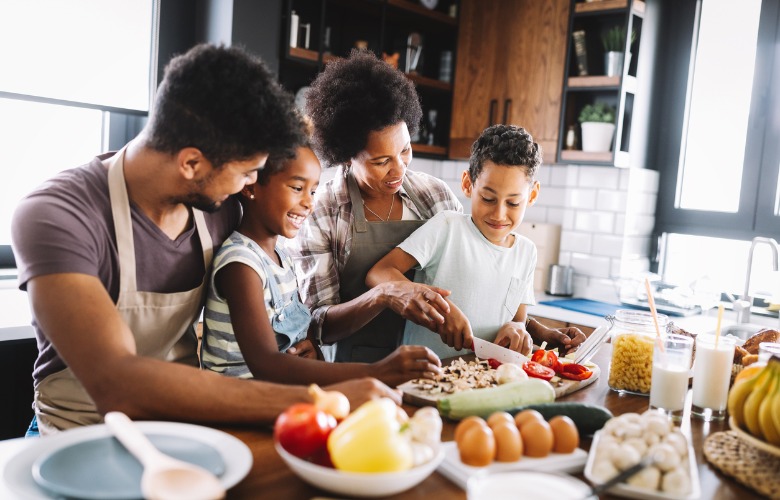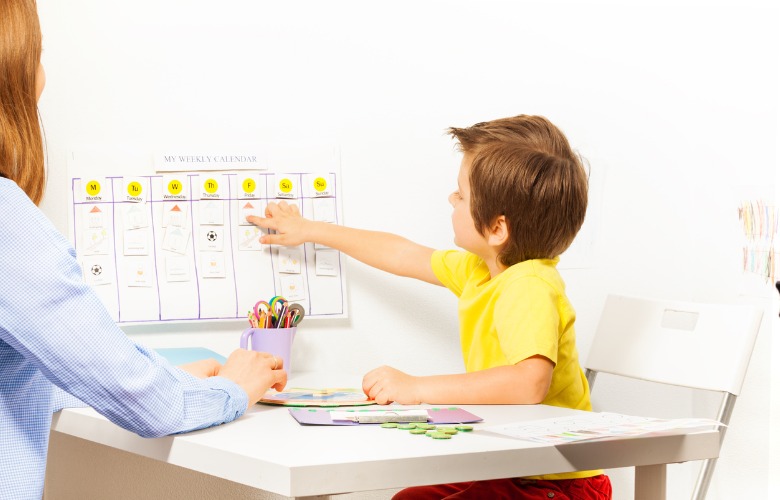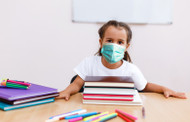Back to School in Uncertain Times
Posted by Jemile Nesimi Hobson, B.A. on Oct 12, 2024
This year back to school can mean many things, depending on where you live and what you decide is best for your kid - back to school in person, distance learning, homeschooling or a hybrid of in-person or virtual. Your child's new school year will be very different due to COVID-19. This is a new frontier for many of us and the stress of managing work and family will be greater no matter where your family's back to school happens. The one thing that doesn't change is the summer months will near an end and the fall season will be approaching. Keeping your family healthy, safe, and happy will be paramount. Here are just a few tips on how to do that:

Prepare Your Child
Talk about what the next year might bring, strike up a conversation, and read books that address some of the fears and anxieties they may be experiencing. Role-playing is an excellent way to ease into new experiences.
Talk about your families back to school traditions and perhaps remind them that fall is around the corner – along with it Halloween and apple pie. Whatever gives your child the opportunity to look forward to the new year ahead.
Let them pick out a few of their school supplies – like a snazzy new folder or new lunch bag. If staying home this school year or part of it, let them pick out something they can use at home. It will help give them some control and help them feel included in the process.
Help them understand that if they go to school in person that people may be taking their temperatures and that they will have to sanitize or wash their hands often. They will have to social distance according to their school's new rules and procedures and will probably be required to wear a mask all day. It may be a good idea to get your child used to wear a mask for longer periods of time beforehand.
Review the CDC recommendations to see what guidelines have been set for schools and check with your state guidelines as well.
Another great way is to create or print out routine cards that indicate the things they will need to do (i.e. take a bath, brush teeth, and put on your shoes) and the activities they may have during school (i.e. gym class, Spanish or computers). If you practice with them before school starts, it will help them to visualize what they can expect. This is especially true if they will be going to school virtually while parents may be working at the same time.
Relax the Schedule in the Beginning
While you may want to just dive right into a new schedule, switching from summer to back to school is a huge transition. Depending on how you spent the summer, try to ease into a new schedule. Slowly change bedtimes by 10 minutes at night and 10 minutes earlier in the morning. Parents will probably need to readjust their schedules too, especially since the last school year ended so abruptly.

Meal Plan Family Dinners
When back to school comes, we tend to switch from lighter summer eating to heavier foods. While these are great in moderation, try to remember the summer salads you enjoyed. Ditto for the popsicles – summer is made for ice -cream. Try replacing it with frozen yogurt or an apple instead. Fall is an excellent time to incorporate harvest foods like apples, pears, pumpkin, beets, Brussels sprouts, cranberries, and sweet potatoes into your family dinners. Lastly, try to sit down together for a meal at least 3-5 times per week to talk about your day. Studies show that kids benefit from eating as a family:
- Kids learn more rare words during dinnertime conversation – 1,000 words on average
- Teens are twice as likely to get A’s when eating dinner with their family at least 5 times per week
- More likely to eat more vegetables and fruit
- Less likely to be obese
- More likely to eat healthier as adults
- Studies also show that the kids who have regular family dinners are less likely to smoke, binge drink, use drugs or experience problems at school
- Lower rates of depression and suicidal thoughts.
Make lunches and snacks while you prep dinner
You are already making food, you are already running around helping with homework or taking care of that email for work. Crank up the music and don’t forget your own healthy lunches for the next workday. The sooner you get it over with, the more time you can relax that night and dare we say get an extra 10 minutes sleep in the morning? If your child is distance learning - pack their lunch as if they were going to school - especially if your child isn't old enough to make their own throughout the day.
Another tip: Embrace freezer cooking - back to school is a busy time of the year - make things easy by cooking an extra meal or two on the weekends and freezing them. Other great time savers include one-pan cooking, crock-pot or instant pot and Meatless Mondays. Take the pressure off yourself as parents to provide home-cooked, healthy meals without the fuss. For healthy recipes the whole family will love, check out Food Network's Family friendly weeknight dinners recipe list.

Be Organized
Set up a command center – this can be as simple as a family calendar on the wall and a wall pocket for important school papers. A dry erase board for family tasks can also be useful. If your kids have lots of activities, you can also color-code everyone, so it is easy at a glance. Having an online family calendar linked to your smartphone with reminders and events can also keep everyone on the same page. When information comes in – due dates, field trips, parent meetings, and parent volunteer obligations – put it on the calendar right away.
If going to school in person, make sure masks are routinely washed and put in the same place every day. Develop a system for sanitizing their belongings when they enter the house.
Other ways to stay organized include:
- When school supplies are on super discount at the beginning of the year, pick up a few extras. You will be grateful when your kid tells you they need a new glue stick or notebook the morning before school starts. Another genius lifehack? Homework caddies – keep supplies they need for homework on hand and easy to access.
- Organize your car. Store some juice boxes, granola bars, a first aid kit (for those scraped knees at soccer practice) and baby wipes. A few backup masks, sanitizer, and even a spare thermometer may also be a good idea.
- Plan a daily routine for your kids. Bedtime routine, morning routine. Make sure they have their clothes for the next day ready to go. Assign a place that backpacks and lunchboxes always go.
- Try a bullet journal notebook to keep all the last-minute tasks you think of when you are on the go, it is easy to set-up and as simple as using a regular spiral notebook.
- Try an online family organizer such as Cozi or a visual board organizer like Trello. These apps can easily be shared between members of your family including the kids and work on most smartphones.
- Organize your fridge so that your kids can pack their own lunches by setting up lunch stations that you can stock weekly or biweekly.

Boost Your Kids Immune System
Cold and flu season comes along with fall in addition to training to avoid COVID-19. Some of the ways to boost their immune system include:
- Give them more fruits and vegetables to eat - especially phytonutrients rich ones like green beans, oranges, carrots, and strawberries.
- Give them a daily multivitamin.
- Give them herbs that support their immune system, like elderberry
- Make sure they are sleeping enough - toddlers require 11 to 14 hours and preschoolers need 10 to 13 hours - these include naps. Older children should get at least 8 to 10 hours.
- Get active - exercise boosts your immune system and doing it as a family is a great way to bond.
- Wash hands often - this is more important than ever now.
- Don't allow smoking in your home - second-hand smoke contains more than 7,000 harmful chemicals and increases a child's risk of asthma, ear infections, and bronchitis.
Check for COVID-19
If you or your child have had a test positive for COVID-19 or show symptoms, do not send your child to school. Stay home and contact your medical professional.
According to the CDC, symptoms may appear 2-14 days after exposure to the virus. People with the following symptoms may have COVID-19:
- Fever or chills
- Cough
- Shortness of breath or difficulty breathing
- Fatigue
- Muscle or body aches
- Headache
- New loss of taste or smell
- Sore throat
- Congestion or runny nose
- Nausea or vomiting
- Diarrhea.











